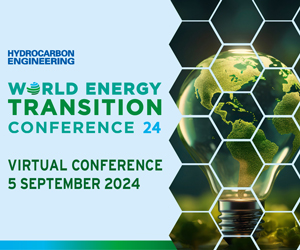The race towards renewable energy is intensifying at an unprecedented pace. Faced with the pressing challenges of the climate crisis, significant advancements are emerging. Solar panels are invading deserts, wind turbines dot coastlines, and hydroelectric dams harness the power of rivers.
This energy transformation is essential for reducing our dependence on fossil fuels and limiting global warming. In 2024, global renewable energy capacity saw a record growth of 585 gigawatts, representing over 90% of the new capacity added globally. However, this rapid expansion is facing major obstacles, particularly the effects of climate change on clean energy production. Extreme weather phenomena, such as unusual droughts and erratic winds, disrupt renewable energy generation. Thus, experts emphasize the importance of smart planning and resilient infrastructure to ensure the stability and efficiency of future energy systems.
What is climate science?
Climate science is a discipline that studies the atmospheric, oceanic, and terrestrial processes that determine the Earth’s climate. It analyzes the complex interactions between the various components of the climate system, such as greenhouse gases, ocean currents, and carbon cycles. Through sophisticated models and empirical data, climate science allows us to understand past, present, and future trends in the global climate. This understanding is essential for anticipating the impacts of climate change and developing adaptation and mitigation strategies.
By integrating data from satellites, weather stations, and field studies, climate scientists are able to predict climate variations in both the short and long term. These forecasts are crucial for making informed decisions in various fields, including urban planning, agriculture, natural resource management, and, of course, the development of renewable energies.
Climate science is not limited to studying atmospheric conditions. It also encompasses the analysis of human impacts on the climate, such as deforestation, industrialization, and carbon emissions. This holistic approach allows for the development of integrated solutions to reduce carbon footprints and promote a sustainable energy transition.
How does climate science influence the development of renewable energies?
Climate science plays a key role in the development of renewable energies by providing essential data to optimize their efficiency and reliability. For example, understanding precipitation and wind patterns allows for better placement of wind turbines and solar farms to maximize energy production. Furthermore, forecasting extreme weather phenomena, such as storms and droughts, helps design resilient infrastructure capable of withstanding these hazards.
Climate research also enables anticipation of seasonal and annual variations in energy production. For instance, a recent study showed that global renewable energy capacity significantly increased in 2024, with an unprecedented growth of 585 gigawatts, representing over 90% of all new power added worldwide. This rapid growth is largely fueled by accurate climate data that allow for better planning and management of renewable resources.
Moreover, climate science contributes to technological innovation in the renewable energy sector. The integration of artificial intelligence and machine learning in climate modeling enhances forecasting and optimizes energy distribution. These technological advancements are essential to overcoming the challenges posed by climate variability and ensuring an effective energy transition.
To learn more about investments in renewable energies, check out this article.
What challenges does climate change pose for renewable energies?
Climate change presents several challenges to renewable energies, threatening their effectiveness and viability. One of the main difficulties lies in the climatic variability that directly affects energy production. For instance, extreme climate events such as droughts or floods can reduce the availability of hydraulic resources, thus limiting electricity production from hydroelectric dams.
In 2023, climatic anomalies led to a decrease of over 50% in hydroelectric production in Sudan and Namibia due to low precipitation. In these regions, hydroelectricity accounts for about 60% of the energy mix, making these countries vulnerable to climatic fluctuations. Similarly, in China, which holds 40% of the world’s onshore wind capacity, limited production increases were observed in 2023 due to wind disruptions.
Solar panels, while less affected by certain climatic conditions, can see their efficiency reduced by high temperatures and excessive solar radiation, requiring innovative cooling technologies to maintain their output. Furthermore, rising sea levels and intensifying storms pose threats to renewable infrastructure located near coasts, such as solar farms and wind farms.
A recent report from the Texas Senate also highlights the increased risks faced by energy installations due to extreme weather events, emphasizing the need to adapt infrastructures to make them more resilient.
These challenges underscore the importance of a proactive approach in planning renewable energies, integrating climate forecasts and diversifying energy sources to reduce reliance on a single resource.
How does climate intelligence enhance the reliability of renewable energies?
Climate intelligence is revolutionizing the way renewable energies are planned and managed, increasing their reliability and efficiency. Through advanced analysis of climate data, it is possible to more accurately predict variations in energy production and optimize distribution based on weather forecasts. For example, by using seasonal forecasts of wind and precipitation, operators of wind and hydroelectric plants can adjust their production to meet fluctuating energy demand.
Artificial intelligence (AI) technologies play a crucial role in this transformation. Machine learning models can analyze massive volumes of climate and energy data to detect patterns and anticipate fluctuations in renewable resources. For example, by using AI, operators can optimize battery storage and redistribute energy across different regions, thereby improving the flexibility of the electricity grid.
A concrete example of this application is the short-term wind speed forecasting project in Costa Rica, developed in collaboration with national energy authorities. This AI model predicts wind speed variations, thereby optimizing wind farms’ operations and reducing downtime. Similarly, in Chile, AI is used to estimate evaporation rates on reservoirs, allowing for more effective water management and increased solar production.
These innovations in climate intelligence not only increase renewable energy production but also strengthen the resilience of energy systems against climatic hazards. By integrating accurate forecasts into the daily management of electrical grids, it becomes possible to ensure a stable and uninterrupted supply, even during extreme weather conditions.
What emerging technologies use climate science to optimize renewable energies?
Several technologies are emerging at the intersection of climate science and renewable energies, aiming to optimize energy production and distribution while minimizing environmental impacts. Among these technologies, artificial intelligence and machine learning stand out, offering advanced solutions for forecasting and managing energy resources.
Predictive models based on AI can analyze real-time climate data to anticipate variations in energy production. For example, high-resolution weather forecasts enable effective planning of maintenance for wind turbines and solar panels, thereby reducing downtime and increasing the availability of installations. Additionally, intelligent energy management systems use these forecasts to balance supply and demand, ensuring optimal electricity distribution.
Another promising technology is floating solar, which combines the advantages of solar farms and water resource management. By integrating floating solar panels on reservoirs, this technology not only increases the solar capture area but also reduces water evaporation, thus contributing to more efficient water resource management. This concept has been successfully explored in Chile, where floating solar panels have reduced evaporation rates by over 75% during the summer.
Moreover, advanced energy storage solutions such as high-capacity batteries and thermal storage systems play a crucial role in stabilizing renewable electrical grids. By storing energy produced during peak production periods, these systems can release energy when needed, ensuring a continuous supply even in the absence of direct production.
The integration of climate science into these emerging technologies allows for overcoming the current limitations of renewable energies and creating more robust and adaptive energy systems. To delve deeper into these innovations, you can check out This article on renewable energies.
What is the future of renewable energies in the face of climate challenges?
The future of renewable energies in the face of climate challenges is promising but requires constant adaptation and continuous innovation. Global renewable energy capacity experienced record growth with an increase of nearly 50% in 2023, primarily due to solar and wind sources. However, to ensure a successful energy transition, it is crucial to overcome the obstacles posed by climatic variability and the impacts of environmental changes.
Experts predict that the rise of renewable energies will continue, supported by falling costs and increased investments. However, this growth must be accompanied by a diversification of energy sources to minimize the risks associated with extreme climatic conditions. For example, combining solar, wind, hydro, and energy storage can offer enhanced resilience against climatic uncertainties.
Additionally, technological innovation will play a key role in the future of renewable energies. Advances in artificial intelligence, photovoltaic materials, and energy storage systems will enhance the efficiency and capacity of energy infrastructures. The adoption of smart grids, capable of dynamically managing energy production and consumption, is also essential for seamlessly integrating renewables into the overall energy mix.
A notable example of this trend is the increase in solar production in South America, where countries like Brazil, Colombia, and Bolivia have seen their solar production rise by 4 to 6%, thanks to favorable climatic conditions. This growth is partly due to a better understanding and integration of climate data, allowing for continuous optimization of solar installations.
Moreover, international collaboration and sharing of climate data are essential to promote a global and equitable energy transition. The sharing of best practices and technological innovations can help developing countries access renewable energies, thus stimulating sustainable economic development and combating climate change.
To keep up with developments and policies related to renewable energies, you can refer to this article on legislative actions.
Articles similaires
Thank you!
We will contact you soon.














